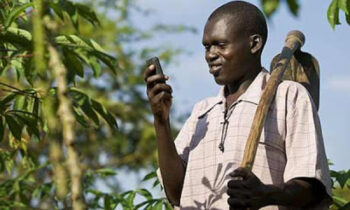By D. Ray Davis —

To quote the inimitable philosopher Bob Dylan, “Times, they are a-changin’.” Culture is shifting at an ever-quicker pace, and, therefore, so is the way we approach missions. The recent closing of a once prominent missions organization betrays that truth and has added urgency to the missions conversation, especially among church and mission leaders.
We must read our cultural moment correctly and make decisions that ensure long-term effectiveness in our work among the nations. As in 1 Chronicles 12:32, we need “sons of Issachar” in our day who are able to “understand the times” and discern what we should do.
Given the enormous amount of technological advancement during the past two decades, some believe that we have subtly entered a fourth era in modern mission history (did you know there have been three thus far?). This new era changes both how missions will be carried out and how missionaries will relate to the broader church.
Change can be a good thing. And in this case, I believe it is, if for no other reason than this new epoch holds the key to sending limitless missionary teams in our day and beyond.
“Given the enormous amount of technological advancement during the past two decades, some believe that we have subtly entered a fourth era in modern mission history.”
A Brief Review of the Three Eras in Modern Mission History
The First Era: To the Coastlands
It’s interesting how little things have significant ramifications. William Carey’s Enquiry inspired generations after his own missionary task was catalyzed by “the invention of the mariner’s compass.” Carey realized this tiny tool provided new possibilities for reaching peoples across large bodies of water. He concluded, “Providence seems in a manner to invite us to the trial.” The compass opened up the world in his generation and demanded a response. A movement set sail to the coastlands from 1792 to 1910.
The Second Era: To the Interior
In 1865, missionaries began to look inland. David Livingstone asked, “Can the love of Christ not carry the missionary where the slave-trade carries the trader? I shall open up a path to the interior or perish.” Hudson Taylor formed China Inland Mission, and other agencies turned toward the inlands. A new era, to the interior, was in force from 1865 to 1980.
The Third Era: To Every People Group
Beginning in 1934 and to present day, missionaries and missiologists recognized that the task was not defined by geography alone. Cameron Townsend and Donald McGavran pressed upon the church the idea of hidden peoples. This movement crystalized when Ralph Winter presented in Lausanne, Switzerland in 1974. Winter is quoted in IMB’s Explore Missions course saying, “The imperative of the Great Commission extended to every people group, not just to every modern country.”
Missionaries continue to serve on coastlands. Churches are being planted in the interiors. Missiologists continue to recognize the importance of different peoples. However, I believe we’ve entered a fourth era in modern missions. Instead of where we go or to whom we go, the primary rallying point of the fourth era could be who goes.
The Fourth Era: By Every Disciple
The fourth era taking shape is not driven by a compass to the coastlands, nor a move to the interior, nor an understanding of the complexity of peoples. It introduces a new dynamic, unleashed by the connectivity technology provides, which gives every disciple the opportunity to play a part in the Great Commission.
Relational or social connectivity is the present-day equivalent of the compass; it has opened up the world to every disciple. Social networking rules the day, and limitless capabilities are now within reach. And to quote William Carey again, “Providence seems in a manner to invite us,” and no worthy objection “with any colour of plausibility” stands in the way “in the present age.”
Unless we miss what is happening in our day.
Two Prominent Features of the Fourth Era: A Connected World Calls for Catalytic Leadership
The First Feature: Connectivity and Networking
Technology enables previously disconnected relationships to be more interconnected. Networking is simplified. Communication and travel are effortless. Therefore, mobilized Christians in churches—who formerly outsourced the missionary task in a linear, limited manner through agencies—can now directly address the task buttressed by agencies in a limitless, exponential manner.
Pastors can lead every disciple to greater involvement. Each disciple can be involved in specific aspects of the missionary task—entry, evangelism, discipleship, church formation, leadership development, and even exit. Every church member can purposely pray and generously give, specifically and with immediacy. And now, they can consistently go and intentionally send in a relational and unencumbered manner.
We must seize this moment to build toward limitless impact.
“We are relationally connected and networked like never before. We should seize this moment to build toward limitless impact.”
The Second Feature: Catalytic Leaders in the Church—Missionaries and Pastors
The nature of this new era hinges on today’s mission leaders and missionaries becoming proficient as catalytic leaders. In the past, missionaries needed to be pioneers or strategists to do the work for the church. But today—with unprecedented connectedness—missionaries also need to be catalytic leaders to empower every disciple to play a part. They must learn to act as a conduit toward exponential missions impact by sharing their expertise, mobilizing, equipping, empowering, and unleashing US church partners.
The same is true with national partners as the Great Commission call takes root in newly planted churches around the world. The mission field will become the mission force. Further, the movement of people around the world means that peoples of the world reside in global cities and towns, including yours. The possibility of reaching the nations in North America and in cities of other countries is a new normal.
How Will We Respond?
The first three modern mission eras required pioneers and strategists. However, the new era calls for catalytic leaders who, by God’s grace, embrace the challenge of limitless sending by leading every disciple to take the gospel to the world.
If history will, indeed, confirm a new era of modern mission, we must now decide how history will record our response.
Ray Davis serves on the mobilization team at IMB. He and his family previously served among Sub-Saharan African Peoples. You can follow him or discuss this topic with him @DRayDavis.



